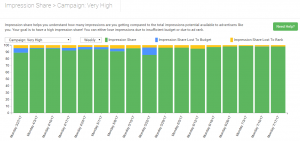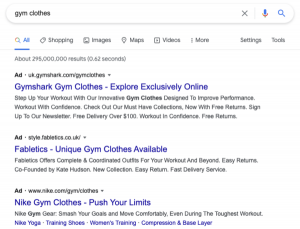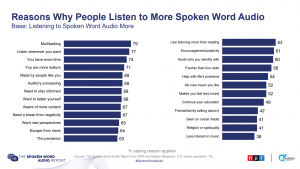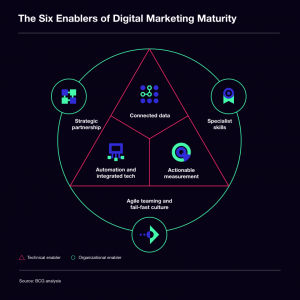August 21, 2016

B2B buyers rely on white papers to make informed purchasing decisions. However, many white papers aren’t helpful – they’re boring sales pitches that put readers to sleep. Here’s how to take your white papers from “snooze fest” to “lead magnet”…
White papers are a B2B marketing workhorse.
B2B buyers – especially technology buyers – rely on them for in-depth information when making purchasing decisions. According to Eccolo Media, white papers are the #2 type of content that B2B technology buyers use during their purchasing process. White papers are also used across all stages of the sales cycle – from awareness to decision.
When done correctly, white papers can present a compelling argument for your product or service.
However, many white papers miss the mark and fail to engage high-quality leads. Here are nine common mistakes that drive away customers and give white papers a bad name:
1. Your marketing objectives aren’t clear.
Before you develop a white paper, make sure that it aligns with your business objectives. Think about your marketing and business goals, along with what you hope to achieve with the white paper. For example, will you use the white paper for lead generation? Does the white paper fill a gap in your content? Will the white paper support a new product or service that you are launching? Do you want a white paper that positions you as an expert or thought leader for a specific topic?
2. You don’t align your white paper with your prospect’s buying journey.
While aligning your white paper with your business goals is important, it’s even more important to align your white paper with your target audience. After all, if your white paper doesn’t serve your target audience’s needs, they won’t read it.
For your white paper to be effective, you must get clear on your target audience’s problems, needs, and goals. You also must target content for buyers in each phase in your sales cycle. According to Demand Gen Report’s B2B Buyer Behavior Survey, 61% of respondents select vendors who deliver a mix of content that is appropriate for each stage of their buying process.
3. Your topic isn’t a subject that will drive leads.
Many white papers fail to drive leads, because buyers don’t care about the topic.
Find out what questions your customers ask during each stage of the sales cycle. Then, address these concerns in your white paper. Your white paper will get more downloads and shares if it helps your customers solve one of their top challenges.

Once you have some potential topics, ask your customers and prospects which one they prefer. You can also run topic ideas past your social media communities. Asking for feedback early in the process will ensure that you don’t waste your resources on a white paper that doesn’t bring you a strong ROI.
4. You don’t start from a good creative brief.
Many marketers create one-page documents that outline a few key messages for their white papers.
However, these documents often don’t contain enough info on who your target audience is and how your white paper will help them. If your creative brief is just a few paragraphs, it won’t give your writer enough information to craft a solid white paper.
Expand on your creative brief to answer questions such as:
- Who is our primary and secondary audience for this white paper?
- What are their top challenges or concerns?
- What solution will help them overcome their challenges?
For my complete list of questions, download my white paper creative brief here.
5. You don’t include quotes and interviews from experts.
Obtaining quotes from subject matter experts and stats from third-party research is critical when writing an authoritative white paper. This information enhances your white paper’s credibility and makes your content more believable.
Stats and data are of particular importance if your target audience is analytical. They want to see numbers that back up your claims.
6. You didn’t use a professional writer.
A white paper can be one of the most persuasive items in your marketing toolbox.
However, it takes a lot of time and skill to craft a compelling white paper. Many B2B marketing teams are small, busy, and don’t have the time to write lengthy pieces of content.
Working with a professional copywriter can help you quickly take your white paper from idea to reality. A copywriter can turn your messages into compelling arguments. This will engage leads and motivate them to take the next step in working with you.
7. You blast your leads with sales messages.
IT pros refer to white paper opt-in forms as, “download a call”. Many of them want a white paper’s content, but they don’t want the sales call that comes five minutes after they download it. Many IT pros avoid answering their phones after opting in for a white paper, so that they won’t have to speak with a sales rep.
If you want to stand out from the pack, don’t bombard your leads with sales calls five minutes after they download a white paper. You can even be transparent in your landing page copy and let leads know if you will call them.
8. Your white paper is a 10-page sales pitch.
Many white papers appear useful on their landing pages. They have compelling titles and promise to share great tips. But when you read these white papers, you find out that they are just lengthy sales brochures. Some even mention their product in the first sentence!

Make sure that your white papers contain 80% educational content. Once you educate customers and earn their trust, you can discuss your product in the remaining 20%.
9. You don’t spend enough time promoting your white papers.
Many B2B marketers put lots of time and resources into developing white papers and then simply post them on their websites and hope leads will pour in.
Unfortunately, it’s not this easy. Here are seven ways you can promote your white papers to get more downloads, shares, and leads:
- Collect leads on your blog. Write a series of related articles for your blog, and direct readers to your white paper’s opt-in form.
- Create an email campaign. Encourage targeted email segments to download and share your white paper.
- Give your sales team a cheat sheet. A white paper “cheat sheet” makes it easy for salespeople to hand out to leads.
- Host a webinar about your white paper’s topic. Not all of your ideal customers will read a white paper. If you host a webinar that’s on the same topic as your white paper, you can reach a wider audience.
- Convert your white paper into a SlideShare presentation. SlideShare is a great channel to use if your audience responds to visuals. Post highlights from your white paper in a SlideShare presentation. You can even add a lead generation form to your SlideShare presentation to connect with potential customers.
- Drive targeted leads to your white papers via LinkedIn. LinkedIn has advanced targeting features that let you put your ads in front of exactly the right audience. For example, you can target your audience by company size, job function, title, and location. You can buy both ads and sponsored updates.
- Get influencers to talk about your white paper. Getting your industry’s top bloggers to talk about your white paper can bring a lot of leads your way. Build relationships with these bloggers before you ask them to do anything for you. Once you have a relationship, send them a link to your white paper’s direct download page, along with a personal email that explains why their readers will find it valuable.
Following these tips will help you take your white papers from “boring” to “brilliant.” And this information doesn’t just apply to white papers. You can also use these techniques with ebooks, guides, and other marketing content to improve your results.
Digital & Social Articles on Business 2 Community(60)









